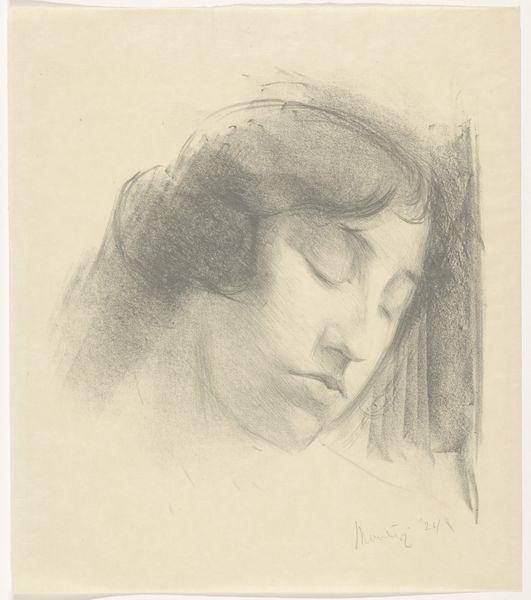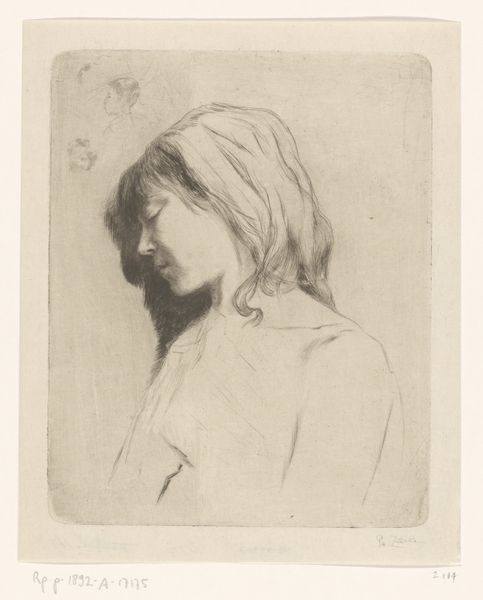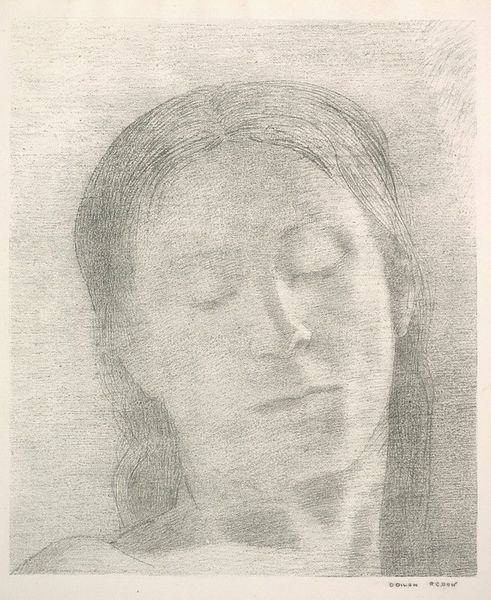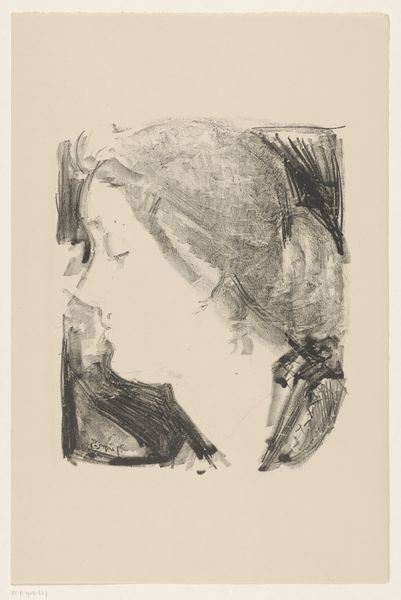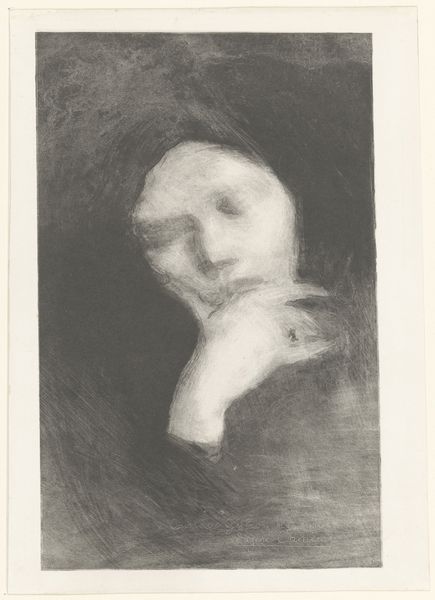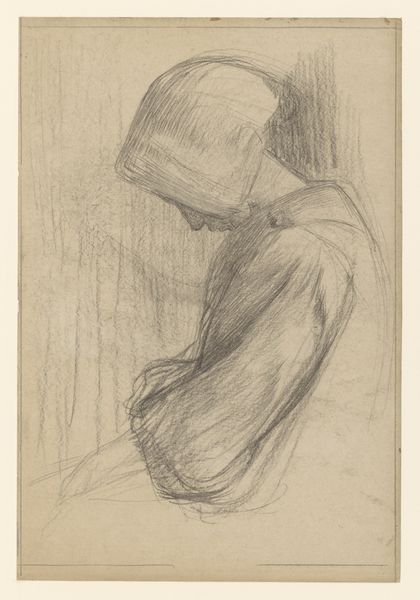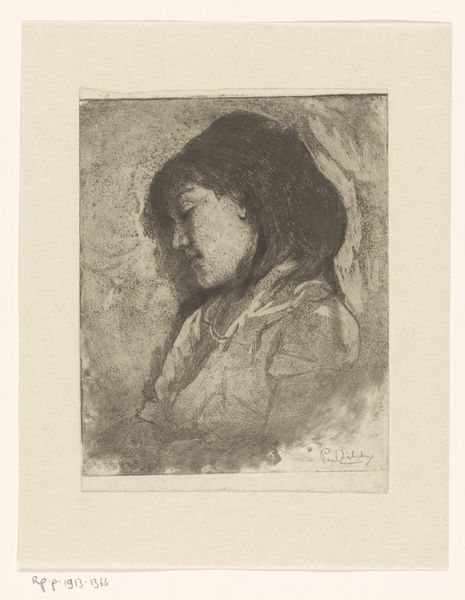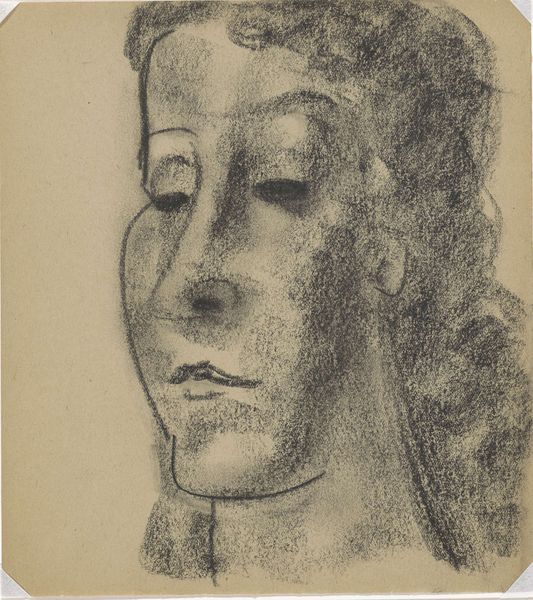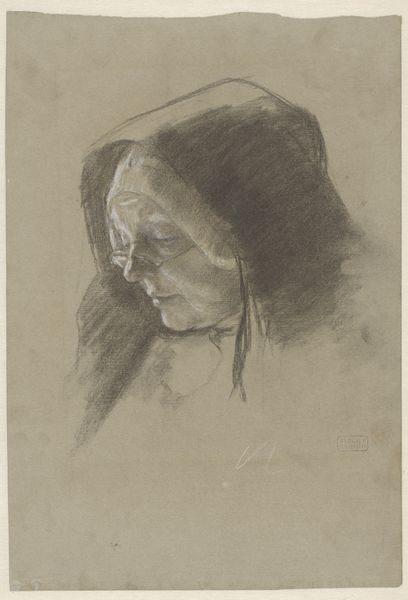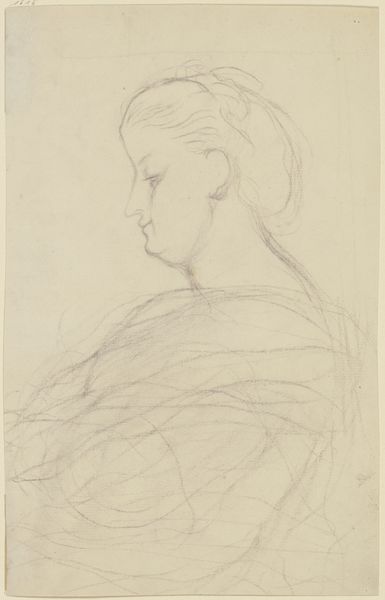
drawing, lithograph, print, dry-media, charcoal
#
portrait
#
drawing
#
lithograph
# print
#
dry-media
#
symbolism
#
charcoal
#
monochrome
Copyright: National Gallery of Art: CC0 1.0
Curator: Let’s discuss Odilon Redon’s “Yeux Clos,” or “Closed Eyes,” a lithograph from 1890. What's your immediate take on it? Editor: Haunting, but with a serene hush over it. She's floating, but not in a way that feels dramatic – more like gently adrift. Almost like an Ophelia freed from all that drowning. The lack of color, the subtle gradients... dreamy. Curator: Redon, associated with Symbolism, sought to represent interior visions rather than external realities. The print comes at an interesting time for the artist—after the official recognition by critics in the 1880s. Note, how the subject almost disappears in the upper background through soft, diffused shading. Editor: That diffused shading feels incredibly modern, almost like the kind of background blur you get on a phone camera. It isolates her, makes her seem like a thought. A private, maybe melancholy thought. Are her eyes closed in sorrow or reflection? Both? Curator: Symbolist artists often evoked feelings through suggestive forms and ambiguity, and, socially speaking, we see here a retreat from the industrial, external world. Lithography allowed Redon to explore tonal variations and textures that reinforced the dreamlike, psychological state he aimed to convey. Editor: And it’s interesting too, thinking of it as a print, meant to be reproduced. The solitude of it—almost contradicts that. Like sharing a secret vision or a particularly poignant dream that is supposed to have been experienced communally. The "message" of the work is almost hidden through the delicate quality of the image. Curator: A fine point to make. This kind of sharing invited engagement but perhaps to reinforce inwardness rather than the social reform so much in discussion in artistic circles at the time. It represents the rise of modern individualism in some sense, that art had a therapeutic use that must not be confused with political agendas. Editor: A closed, or even closing, window into someone else’s interiority. It doesn’t need to do more than exist, right? Its purpose is served the instant the work is done, like releasing a sigh. And from there the sigh moves around the world, detaching more things, causing change everywhere… Curator: Perhaps, we’ve both just gestured at why the Symbolists resonate still with our audiences today—this search for meaning, not through narratives, but states of being that they embody in unique, intensely introspective visual languages.
Comments
No comments
Be the first to comment and join the conversation on the ultimate creative platform.
